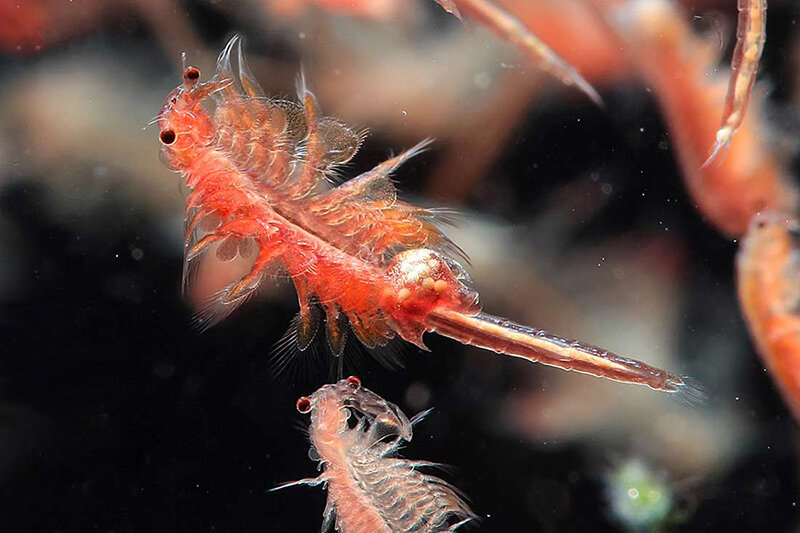As Lake Urmia replenishes Artemia returns to the lake

TEHRAN — After heavy rainfalls nationwide Lake Urmia, northwestern Iran, sprang back into life and now Artemia, aquatic species which used to reside in the lake, returned once again.
Shared between West Azarbaijan and East Azarbaijan provinces in northwestern Iran, Lake Urmia, was once the largest salt-water lake in the Middle East.
However, decades of long-standing drought spells and elevated hot summer temperatures that speed up evaporation as well as increased water demands in agriculture sector shrank the lake drastically. In 1999 the volume of water which was at 30 billion cubic meters drastically decreased to half a billion cubic meters in 2013. Moreover, the lake surface area of 5,000 square kilometers in 1997 shrunk to one tenth of that to 500 square kilometers in 2013.
Kiumars Daneshjoo, CEO of West Azarbaijan regional water company said in late April that the volume of water in the Lake Urmia has increased to 4.1 billion cubic meters which shows a 2-fold increase compared to the same period last year. He also noted that the lake’s surface area reached roughly 3,000 square kilometers. The lake’s surface area has increased 677 square kilometers compared to the same period last year, he added.
And now Lake Urmia, as one of the main habitats of Artemia has returned to life bringing back with itself the aquatic species, IRNA news agency reported on Monday.
Deputy environment chief at East Azarbaijan department of environment has said that as many birds feed on Artemia they are considered as one of the important parts of the food chain in an ecosystem.
Thankfully as Artemia can keep on living as cysts, once the lake’s condition has improved, the species started reproducing, Mir-Mohsen Hosseini-Qomi explained.
Artemia
Artemia is a genus of aquatic crustaceans also known as brine shrimp. The first historical record of the existence of Artemia dates back to the first half of the 10th century AD from Lake Urmia, with an example called by an Iranian geographer an "aquatic dog", although the first unambiguous record is the report and drawings made by Schlösser in 1757 of animals from Lymington, England.
Artemia populations are found worldwide in inland saltwater lakes, but not in oceans. Artemia are able to avoid cohabiting with most types of predators, such as fish, by their ability to live in waters of very high salinity (up to 25%).
The ability of the Artemia to produce dormant eggs, known as cysts, has led to extensive use of Artemia in aquaculture. The cysts may be stored for long periods and hatched on demand to provide a convenient form of live feed for larval fish and crustaceans.
Nauplii of the brine shrimp Artemia constitute the most widely used food item, and over 2000 tons of dry Artemia cysts are marketed worldwide annually. In addition, the resilience of Artemia makes them ideal animals for running biological toxicity assays and it has become a model organism used to test the toxicity of chemicals. Breeds of Artemia are sold as novelty gifts under the marketing name Sea-Monkeys or Aqua Dragons.
MQ/MG
Leave a Comment